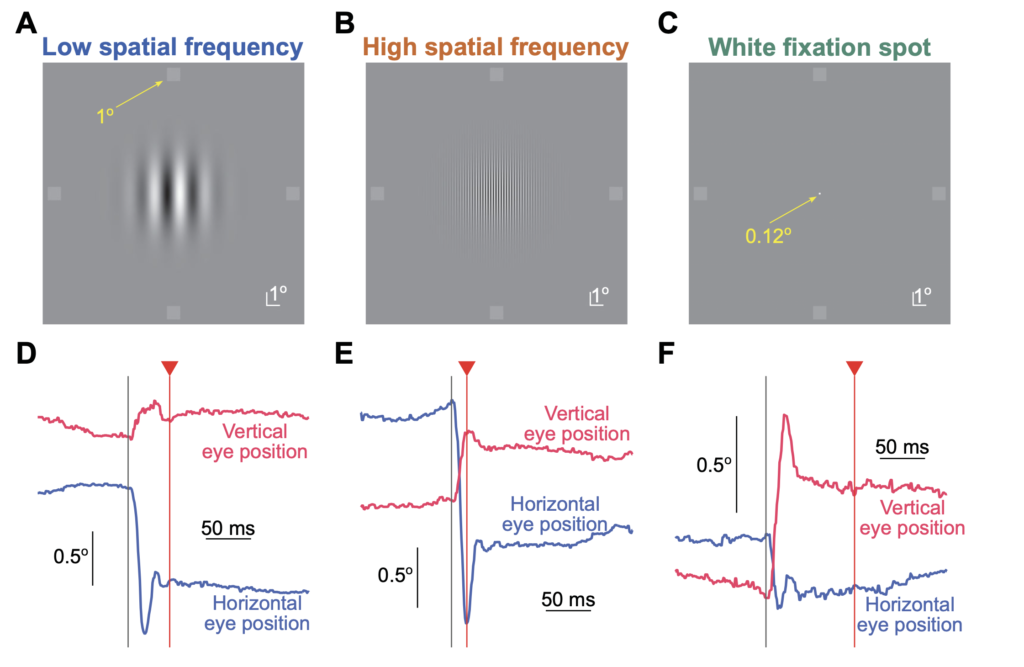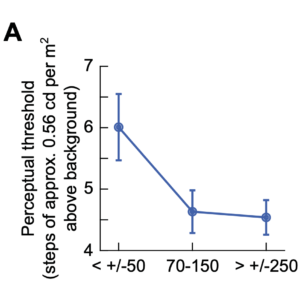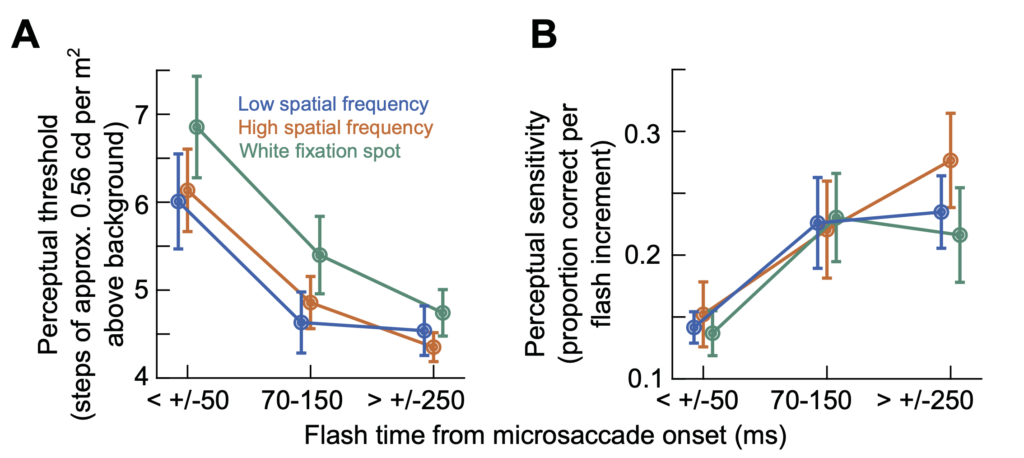
We have a new paper just published in the Journal of Vision. The paper investigates the phenomenon of microsaccadic suppression of peripheral visual sensitivity. In this phenomenon, it is known that peripheral locations away from the line of sight experience a massive reduction in the ability to process visual stimulus onsets, especially if these onsets occur in the temporal vicinity of tiny microsaccadic eye movements (see, for example, these papers from our lab: here, here, and here).

In our current study, we asked whether the properties of microsaccadic suppression depend on the visual context. This was motivated by our recent discoveries of very intriguing integration of visual and motor information in relation to both saccade generation and saccadic suppression of visual sensitivity. Thus, we asked subjects to detect peripheral visual stimuli appearing at different times relative to microsaccade onset. Critically, the microsaccades occurred while the subjects were foveating images of different visual properties. We found that microsaccadic suppression did indeed depend on the foveal sensory context. However, perhaps unexpectedly, the dependence exhibited an opposite effect from that predicted from larger saccades: in the current study, suppression of visual sensitivity was strongest for the smallest and most impoverished visual stimulus that we tested (a spot). We think that this might be related to the spectral content of the tiny spots, and particularly in relation to the small size of the microsaccades themselves, as we also discussed here.
Our results motivate further investigations of active vision with either tiny or regular-sized saccades, as well as with other types of eye movements.

